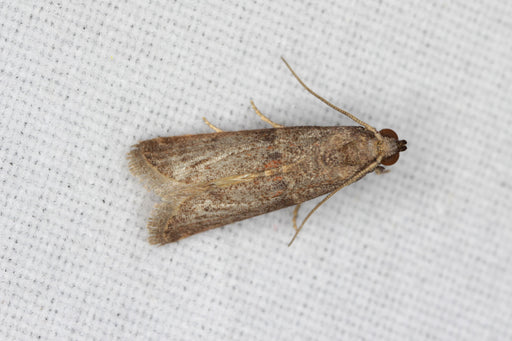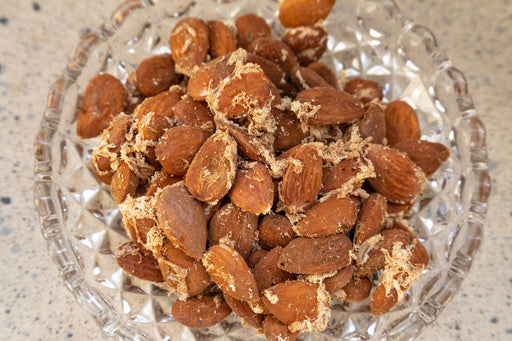How To Get Rid Of Flour Moths

How To Get Rid Of Mediterranean Flour Moths
“Ew! Why are there bugs in the flour!” you scream at the top of your lungs. This was not what you expected when you said you wanted to do a little baking. And all that webbing and those cocoons, larvae, and cupboard moths are positively vile. You don’t want them making a home out of your pantry, so what do you do? First, you need to know what kind of moth you are dealing with. From there, you get rid of them.
We’re going to explain how.
What are Flour Moths? Are Flour Moths Actually a Thing?
Whenever you open a box of whole wheat flour or an older cake mix and a moth comes fluttering out, you have just encountered either a Mediterranean flour moth, Indian meal moth, or some other kind of moth - all of which are referred to as “food moths.”
Mediterranean Flour Moths, like all Pantry Moths, love eating their way through a wide range of your foodstuffs including grains, flour, seeds and nuts, dried beans and legumes, rice, dried fruit, pet food, teas, herbs, birdseed, potpourri mixes, spices, and even household decorations using real nuts, seeds, and grains, like Indian corn. The Flour Moth, unlike its larger cousin the Indian Meal Moth, favours processed grains and flours, such as breakfast cereals and bran as their chosen delicacy.

Why are Flour Moths a Bad Thing to Have?
Although the sight of fluttering wings are a disturbing sight in your kitchen they are only the beginning of the problem.
Once these cupboard moths have laid their eggs then the real devastation begins as the larvae eat their way through the exposed foodstuffs in your pantry. They will leave behind their shed egg cases and skin, as well as faecal matter, silk and webbing, contaminating your food stores.
So although the problem might be discovered in the flour, your entire pantry is a feeding ground for these kitchen moths.
What do Flour Moths Look Like?
Flour moths - namely the Mediterranean flour moth - is larger than its cousin, the Indian meal moth.
You can also separate one from the other by their colouring. A Mediterranean flour moth is light grey with a black zigzag pattern on the wings. The black lines separate the Mediterranean flour moth from all other pantry moth and flour moth types. The length of the body is between 6-12 mm, and the wingspan reaches 23 mm.
Mediterranean flour moths also have a particular pose that they do while at rest. The insect will extend its forelegs forward, raising the head slightly, so that the body slopes.

Where do Flour Moths Come From?
You may think that your dusty shelving is the magnet attracting flour moths into your home, but you can cut yourself some slack. Flour moths do not care about the dust - they want your baking mixes and cereal. Because of that, they are often found sneaking into processing facilities where flour and other grain-based products are made. The moths will lay their eggs in the bulk storage bins, and once those goods are packaged, you bring them into your home straight from the grocery store.
A female flour moth, regardless of the type, can lay hundreds of eggs at one time (anywhere from 100 to 600 eggs). Even if just a few eggs get into your pantry, you could end up with an infestation if you do not catch the pests fast enough. It only takes about 10 weeks for larvae to become pupae then transform into matured flour moths.
However, temperature dictates much of a flour moths’ life cycle. During cooler periods, it may take 10 months for a flour moth to become an adult.

How to Get Rid of Mediterranean Flour Moths
You may know how to get rid of food moths, but flour moths require a more targeted strategy.
In order to prevent flour moths, you need to keep in mind the following:
- Flour moths will get into plastic containers and plastic bags through microscopic holes in the material. Some moths can even eat through softer plastics;
- Eggs and larvae will often hatch directly in the food they are eating;
- Adult flour moths lay eggs anywhere near or on a food source, even in the tiny rims of plastic containers, along baseboards, cupboard corners and shelf liners. and more.
This means you have to know where to look for signs of flour moths so that you can target the worst of the infestation swiftly.
If you suspect you have a flour moth problem, follow these steps to get rid of your flour moths:
- Remove everything from the cupboards and pantry. Do one section at a time, looking for signs of flour moths, like larvae, webbing, cocoons, and dead Mediterranean flour moths. Inspect the areas most affected by flour moths first.
- Using some vinegar, wipe down the pantry. Then, use warm water and dish detergent to wash the shelves, floor, corners, walls, and everything in between.
- Dispose of any infested foodstuffs immediately. Take the ruined food outside.
- Repackage untouched items within solid airtight containers. Do not use disposable containers because flour moths can get inside them.
- Place food moth pheromone traps and natural repellents around the cupboards and shelves in your kitchen to catch any adults. Remember that pesticides can be poisonous, so place anything using chemicals far from your stored food.
- For the next 1-2 weeks of controlling the infestation, make sure you are vacuuming and sweeping constantly, especially when you see any adult flour moths fluttering around. Remember to dispose of the contents of the bag outside your house.
- Repeat the process until the Mediterranean flour moths are gone.

When considering pest control measures for food preparation and food storage areas it is critical to ensure a safe solution is used; either clear the whole area of foodstuffs and dispose of contaminated food prior to using chemical treatments and thereafter use food moth traps designed for food areas. See our range of food moth products for a range of products safe to use in your kitchen.
MothPrevention.com provides a number of solutions to both eradicate food moths and their larvae, as well as preventing further food infestations.
Start Checking for Flour Moths Now!
Forewarned is forearmed and now you’re armed with how to spot the telltale signs of Mediterranean flour moths in your cupboards, you’re well on your way to preventing a flour and pantry moth infestation.
It’s never too early to start the flour moth prevention process!
If you do discover some moth eggs, larvae or signs of moths in your pantry, act fast and follow our proven process to flour moth eradication to quickly take back control of your pantry.
Always remember - we’re here to help in your hour of need. Whether it’s selecting the right products, or identifying your moth type; we at MothPrevention are your secret weapon in the fight against these pantry pests!
About MothPrevention
MothPrevention® speak to customers every day about their clothes moth issues - clothes moths are a species that are ever increasing and that can cause significant damage to clothes, carpets and other home textiles.
To date, we’ve helped over 250,000 customers deal with their moth problems. We have developed professional grade solutions including proprietary pheromones and trap design engineered to the highest production standards.





